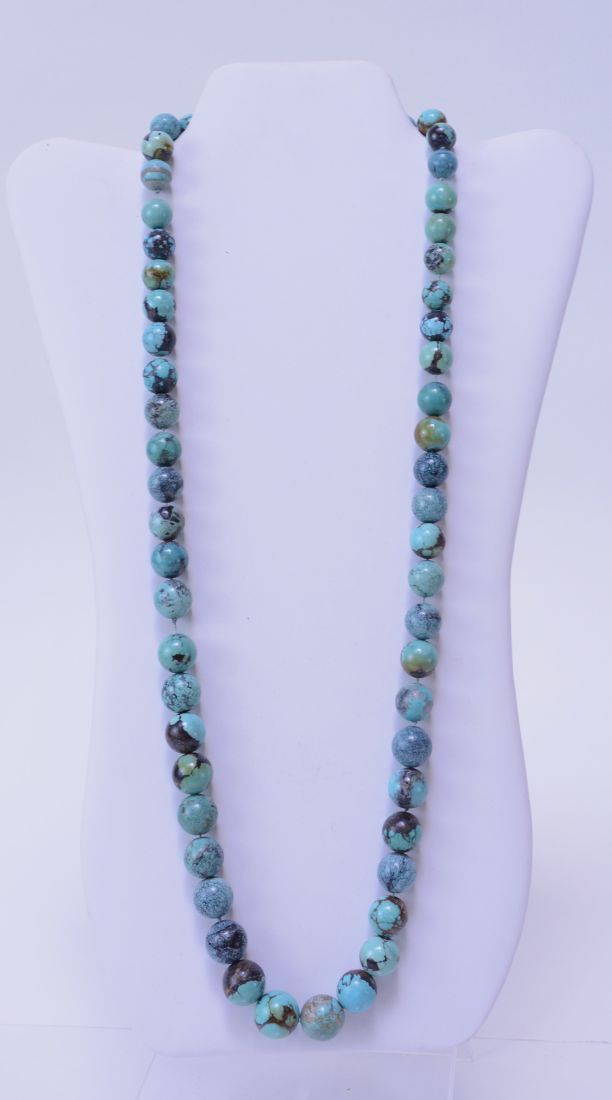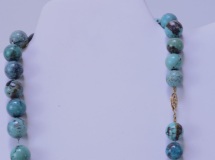- The Artifact Collection Gallery Catalog
- >
- Estate and Old Pawn Jewelry
- >
- Necklaces
- >
- Fetish, Heishi, Tab, Jacla and Stone Bead Necklaces - Estate - Pawn
- >
- 170123-04 Hubbell Beads -- Turquoise round beads
170123-04 Hubbell Beads -- Turquoise round beads
Early 20th Century
30"
A relatively long strand of hard to find Hubbell Beads in excellent condition.
The History of Hubbell Beads
February 16, 2016 by Debra Doggett
The symbiotic relationship between the traders and the Native American artisans in the Southwest was often a complicated one. It was the business influence of the traders that helped boom the market for the jewelry, pottery and blankets the Navajo, Hopi and other tribes produced. They also controlled that market in ways which, viewed through the modern lens, didn’t always appear to support the creation of genuine handmade items from Native artists. One such instance of injecting cheaper, mass produced materials into the work can be found in what have come to be known as Hubbell beads.
Hubbell beads were glass beads imported from Italy, Bohemia and later Czechoslovakia. Though there is not significant evidence the practice was begun by Lorenzo Hubbell, owner of Hubbell Trading Post, the beads have become associated with his name. They were purchased as a less expensive way of producing jewelry. Since the traders often supplied the Native artists with the materials for jewelry sold at the trading posts, the traders looked for ways to lower the costs of producing enough jewelry to meet the market demand. They found one way through the cottage crafters in areas such as Czechoslovakia.
By the turn of the twentieth century, Czech bead makers were exporting large quantities of glass beads to a worldwide market. They came in a wide array of shapes, sizes and colors. Ones imported to the Southwest were shaped and colored to resemble the turquoise and coral used in Native American jewelry. While their use may have been only a substitute for the real gems that make up true handmade jewelry from the Southwest, their import helped families in areas such as Bohemia make a living during the tumultuous times in Europe.
The area known as Bohemia, which would later become part of the newly formed Czechoslovakia, is rich in the natural resources required for making glass. Quartz from local mines and potash, the by-product of wood fires, offered materials for an industry to grow. Bohemian crafters have been making glass beads since the time of the Roman Empire.





